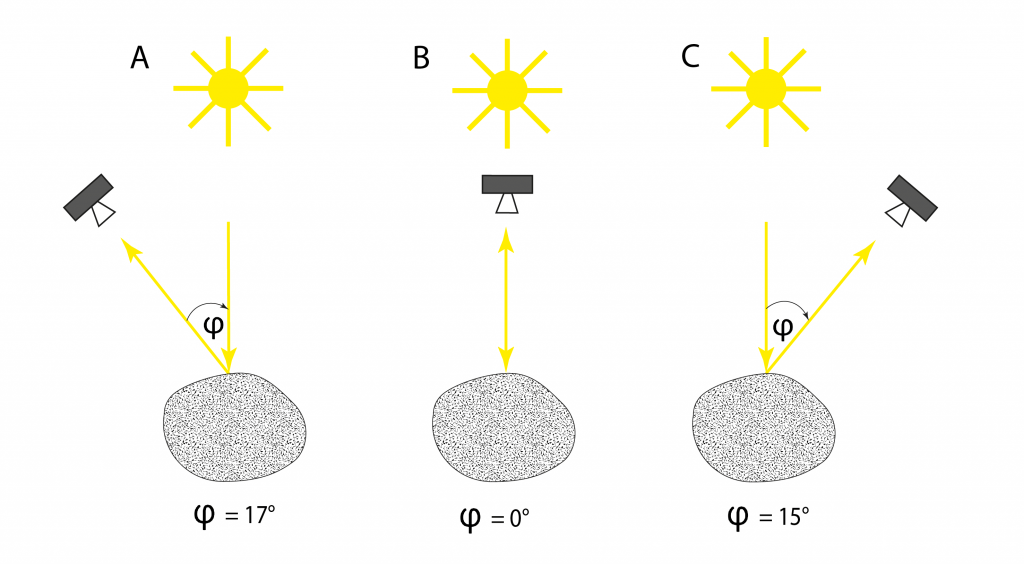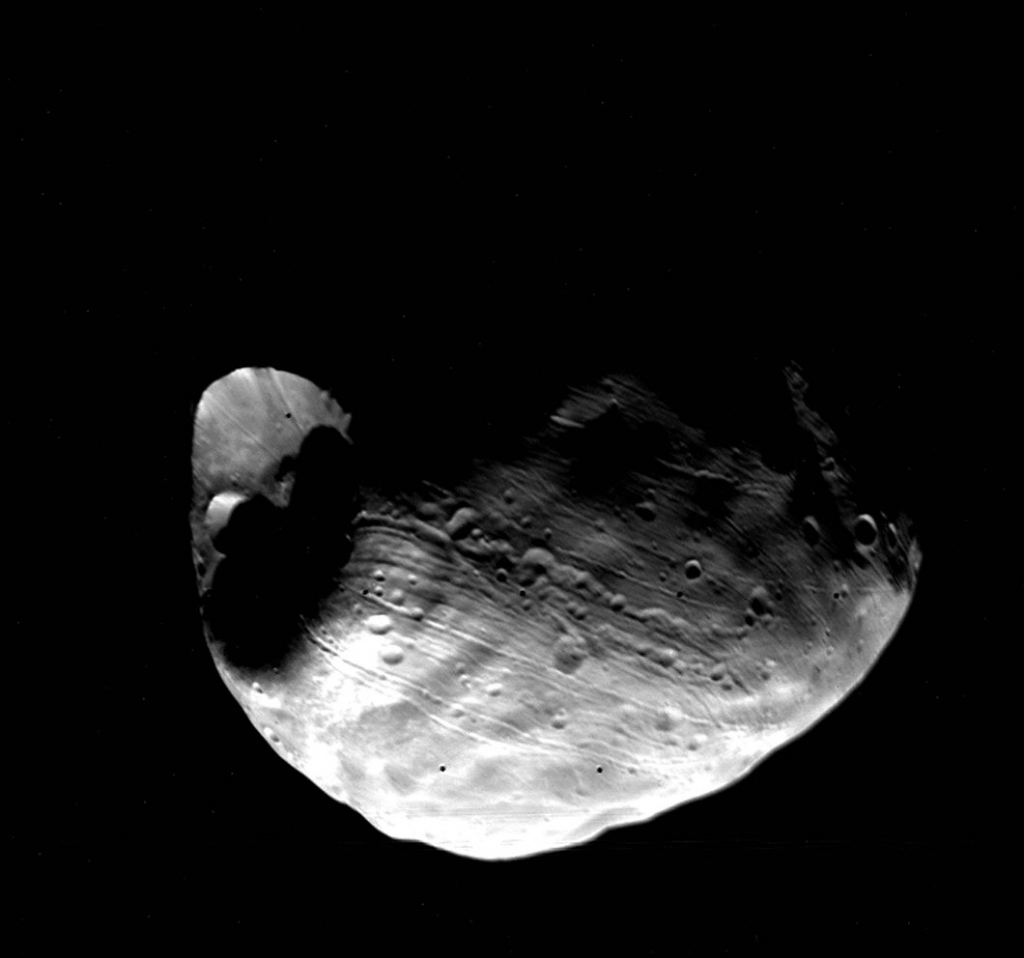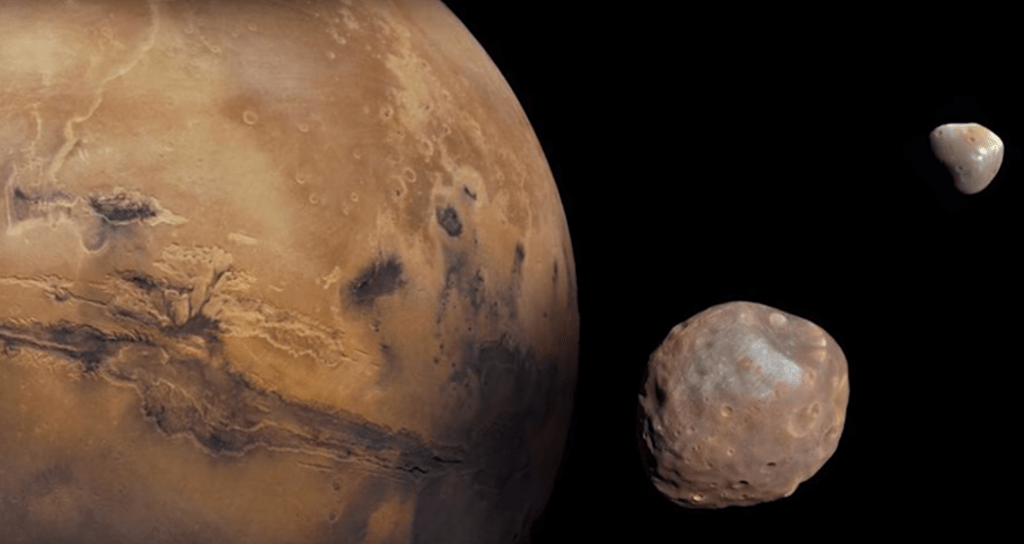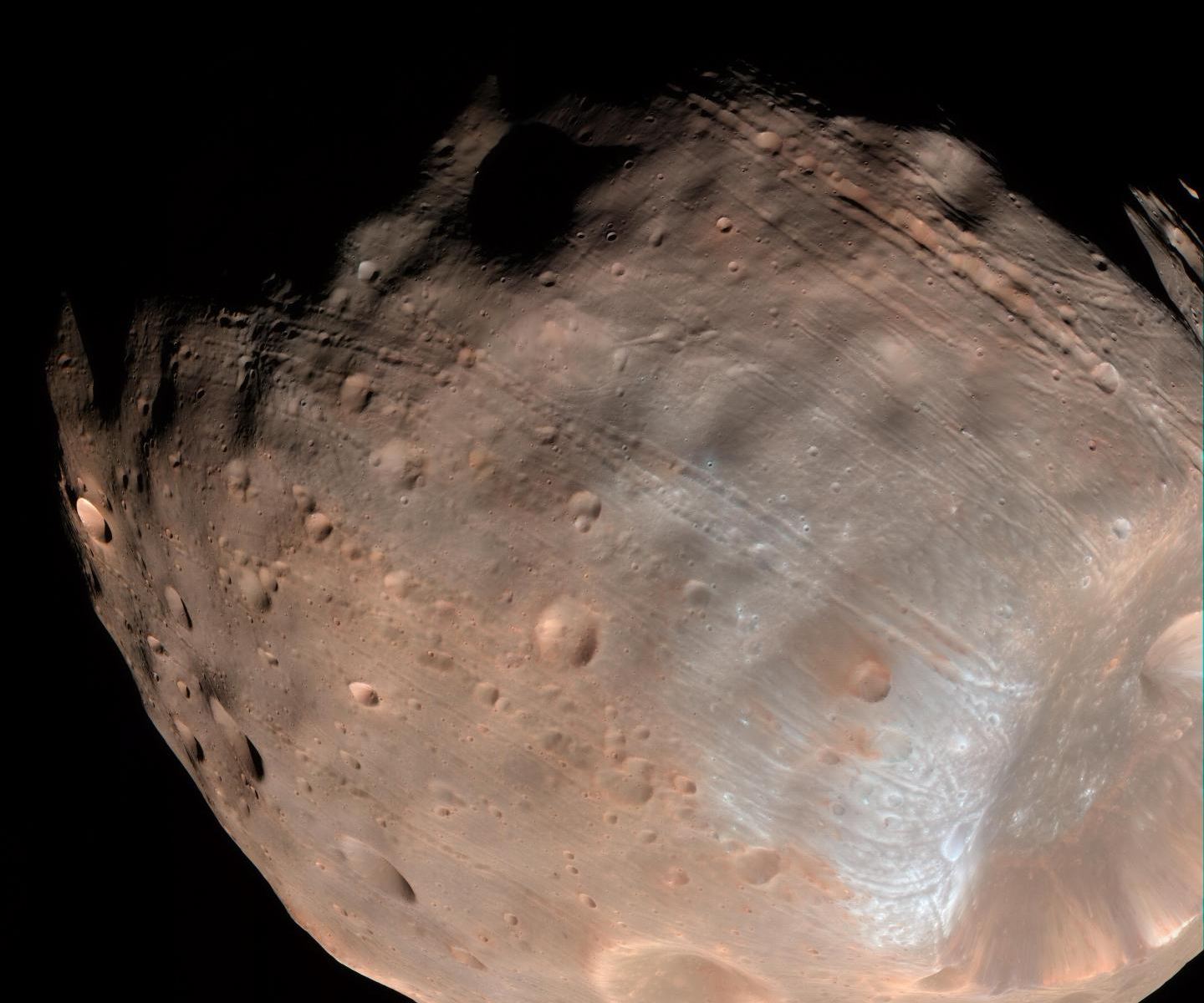The ESA’s Mars Express Orbiter is no stranger to the Martian moon Phobos. The spacecraft was launched in June 2003 and has been in orbit around Mars for 16 years. During its long time at Mars, it’s captured detailed images of Phobos, and helped unlocked some of that Moon’s secrets.
In a new sequence of 41 images captured during a recent fly-by, the Mars Express’ High Resolution Stereo Camera imaged Phobos from different angles, capturing images of the moon’s surface features, including the Stickney crater.
Phobos is an unusual moon. (Is there a normal one?) It orbits closer to its planet than any other planetary moon in the Solar System. It’s only 6,000 km (3,700 mi) above the surface of Mars, and completes an orbit in less time than it takes Mars to rotate. Phobos is travelling so fast that it rises and sets above Mars twice each day.
In the new sequence of images released by the ESA, the moon slowly rotates, giving us a great look at its well-lit surface, imaged as the orbiter is only 2400 km (1500 miles) from the small moon . Phobos moves slowly up and down in the sequence, due to the movement of the Mars Express Orbiter. The video also shows Phobos moving through phases.
Initially Phobos brightens, as the phase angle between the Sun, Phobos, and the orbiter lowers to almost zero. Then the moon darkens again as the phase angle increases to 15. At phase angle zero, Phobos is extremely bright, and this zero degrees angle is rare. It can happen three times a year at the most, and is a perfect opportunity to study the surface. The next time this happens will be in 2020, according to the ESA.

Phobos is small. It’s only about 11 km (7 miles) in radius, and has an irregular form, often being described as “potato-shaped.” Its prominent feature is the Stickney crater, and the strange linear grooves that run along the moon’s surface. Some scientists think that the crater and the grooves are part of the same phenomenon. The impact that created Stickney loosened boulders which rolled around the surface, creating the grooves we can see in images.

Phobos’ origin is uncertain, as is its sibling Deimos. Some think that they’re both captured main-belt asteroids, rather than moons that formed “in-situ” like Earth’s Moon. But both moons orbit Mars’ equator in near-circular orbits. If they were captured asteroids, an elliptical orbit would be expected. Some mechanism must have acted on the moons to bring them into their current circular orbit, perhaps either drag or tidal forces. But it’s unclear if there’s been enough time for that to happen, especially in Deimos’ case.
Or the moons could have coalesced out of secondary material, long after Mars formed. In a third scenario, Phobos and Deimos could be only two remaining bodies resulting from a collision between Mars and another protoplanetary object.

But even though their origins are unclear, Phobos’ demise is fairly certain. Mars’ gravity is slowing Phobos down and dragging it closer and closer. Every century, it moves about two meters closer to the planet. In about 30 to 50 million years, Phobos will break into pieces, and may even form a debris ring around Mars which could last millions of years.
As far as the Mars Express Orbiter goes, it’s already completed more than 5,000 orbits and made a long list of discoveries.
More:
- Press Release: Mars Express views Phobos phases
- Universe Today: Strange Grooves on Phobos Were Caused by Boulders Rolling Around on its Surface
- Universe Today video: Want To Explore Mars? Send Humans To The Moons Of Mars First: Phobos And Deimos

